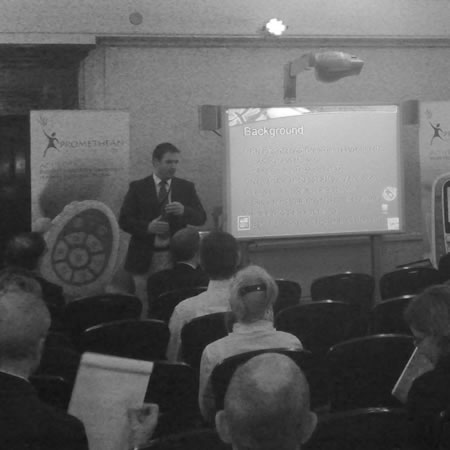After posting my video of my first experience of touching the Google G1, I went back and looked at it again.
This time I got to have a go on the keyboard and it worked quite well, a little small for me and I did hit the wrong key now and again and all I was doing was entering search terms into Google.
According to the rep I spoke to there is no Flash player on the Google G1.
This surprised me, however the problem arose due to the cost of providing a player on the phone.
I decided then to try out YouTube and see what happens, and what you get is a similar experience to the iPhone in that the phone downloads the video and plays it outside the browser in the media player. The quality was similar to the experience on the iPhone (well the iPod touch).
I also got a photo of the Google G1 next to the iPod touch.

One of the quotes that I like about the differences between the iPhone and the Nokia N95 came from quoted by Josie Fraser. EDIT: original blog post from which the quote came and Ian’s blog posting which references it.
You use the iPhone to consume content whilst you use the Nokia N95 if you want to create content.
This I agree with owning both an iPod touch and the Nokia N95.
If I want to watch video, listen to audio, see photographs or browse the web, the iPod touch wins out every time. There is no camera and no microphone so almost impossible to create original content – though the iPhone does have a (still) camera and a microphone.
Whereas on the Nokia N95, the browsing experience is painful unless you are using mobile sites. Video works as does audio, but as it doesn’t interface with iPhoto, images have to be organised manually on the phone. However in creating content, the N95 wins out, great camera for both stills and video. Third party applications allow you to get those images and films out onto the web, I use Shozu, Qik and Seesmic to do this.
So what has this got to do with the Google G1?
Well I am wondering if the Google G1 could be the first phone which is good at both creating content and consuming content.
Experiences so far show that content consumption works well on the G1, certainly viewing video and browsing the web was pretty nice and easy to do.
I did use the camera, but did not have a chance to create some content, but as the platform is relatively open I suspect we will see third party applications such as Shozu and Qik very soon.
Looking forward to getting one (if possible).
Overall I am still impressed with the phone.




